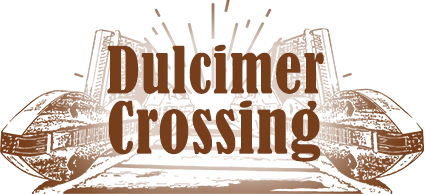Blog
lessons
Practicing in the Dark
by Linda Ratcliff
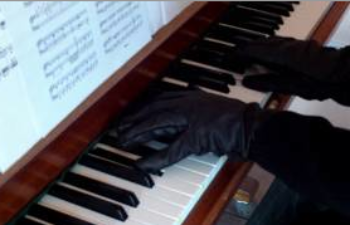
I'm spending the winter in sunny California, but I know many of you have been getting hit with some pretty cold weather. Brrrr. That reminds me of the way I used to practice piano. I usually arrived at school, during both my high school and college years, at about 6:30 in the morning, and I always went straight to the practice rooms. Now the school didn't turn on the heaters full blast until about 7:30 a.m., so to challenge myself (and because no one was looking), I would st…
What is Drone Style?
Once we have learned the melody of a tune we can begin adding notes in order "fill out" the sound of the tune. The easiest way to do this is to play "drone style". This is actually the traditional way to play the old mountain dulcimers which did not have frets that extended all the way across the fretboard, but only were present under the melody strings.

On the mountain dulcimer, the player plays the melody on the string(s) which are required for the melody and simply strums all…
What is Melody-Only Style?
When we are playing the melody of a tune, without adding any chords, bass notes, harmony notes or drones, this is playing our dulcimers like they are melody-only instruments like flutes, trumpets, clarinets or trombones. This way of playing focuses on the melody and doesn't have the distraction of other notes.
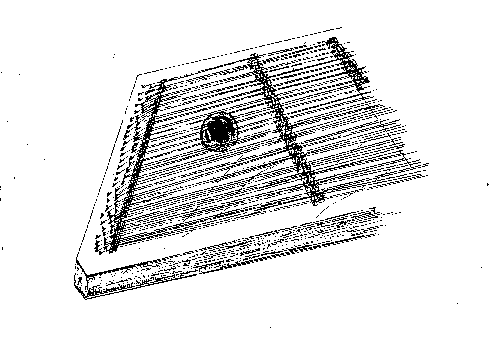
On the hammered dulcimer, the player is playing only the melody of the tune.

On the mountain dulcimer, the player is playing on the string(s) which are required for the me…
New Hammered Dulcimer Instructor!
We are pleased to introduce Bill Robinson our newest Hammered Dulcimer Instructor at DulcimerCrossing.com!
Teaching the Old-Time Tunes...for fiddle!
Part 2 of the Update 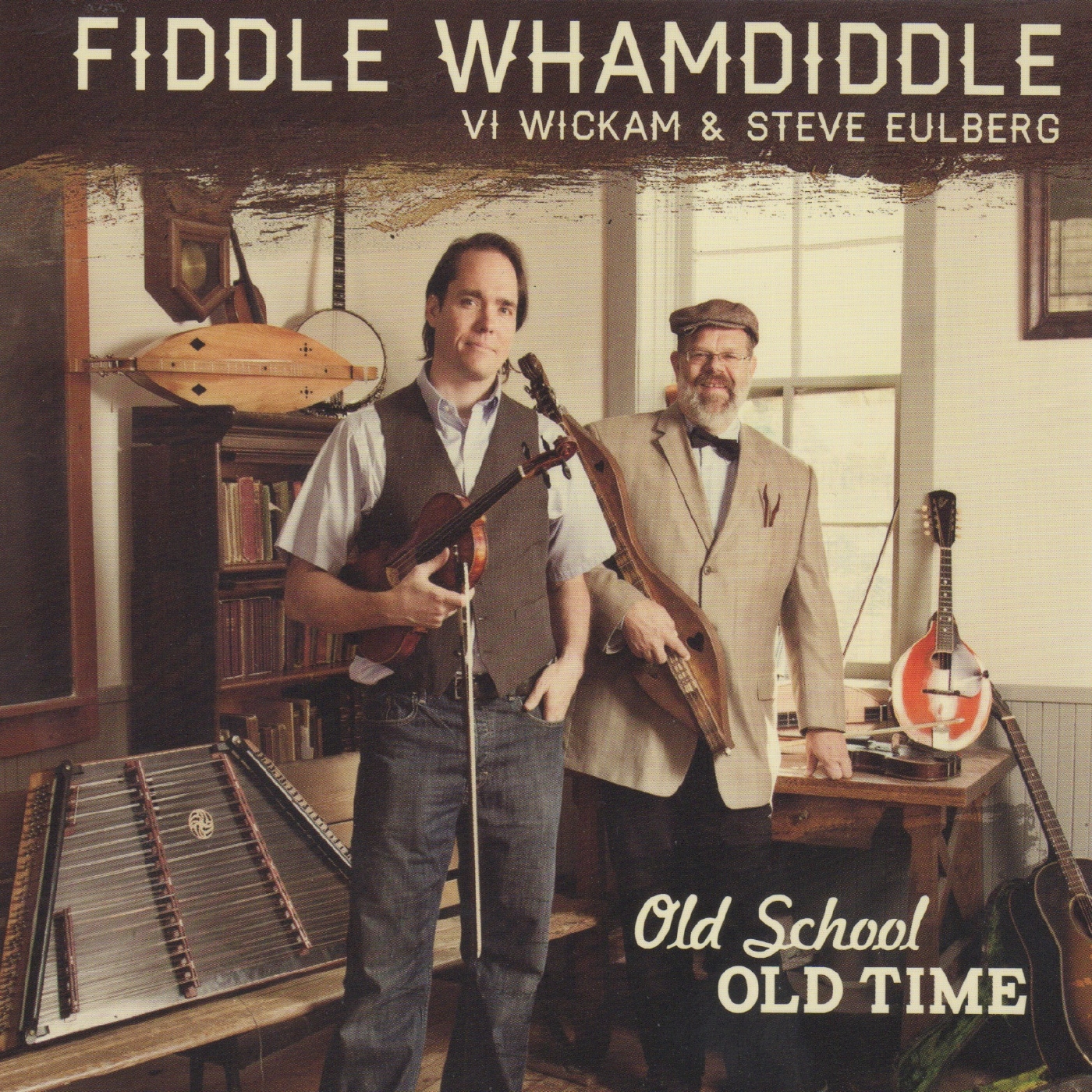 Now you already KNOW that DulcimerCrossing teaches lessons for both kinds of dulcimer, but did you know that the tunes on the Old School Old-Time FiddleWhamdiddle CD are being taught for fiddle players on Vi Wickman and Matthew Hartz's MyTalentForge.com? If you don't play fiddle, please pass this on to your friends who do!
Now you already KNOW that DulcimerCrossing teaches lessons for both kinds of dulcimer, but did you know that the tunes on the Old School Old-Time FiddleWhamdiddle CD are being taught for fiddle players on Vi Wickman and Matthew Hartz's MyTalentForge.com? If you don't play fiddle, please pass this on to your friends who do!
Introduction to New Fingerstyle Lessons
Here is the Introduction to her Lesson Series on DulcimerCrossing.com:
Don't Miss the Bus! Back to School Special
SAVE! You don't need new school clothes if you are choosing our homeschool method of dulcimer learning at www.dulcimercrossing.com! And with our Back to School Special (Aug 24-Sept 2), you can save even more AND build your dulcimer skills!
Bridging the Gap between
what you know
and where you want
Your Music to go!
Introduction to Dulci-Bro Lessons
by Steve Eulberg Here is the introduction to the Lesson Series for Dulci-Bro at www.DulcimerCrossing.com, and several lessons have already been posted there!
Dulci-Bro: Where can I get one?
by Steve Eulberg We have begun a Lesson series on learning to play the Dulci-Bro and the natural question arises: where can I get one? Homer Ledford is credited by at least one observer as being the originator of a resonator dulcimer.
 (Alvey, R. Gerald. Dulcimer Maker: the craft of Homer Ledford. University Press of Kentucky, 2003.)
(Alvey, R. Gerald. Dulcimer Maker: the craft of Homer Ledford. University Press of Kentucky, 2003.)
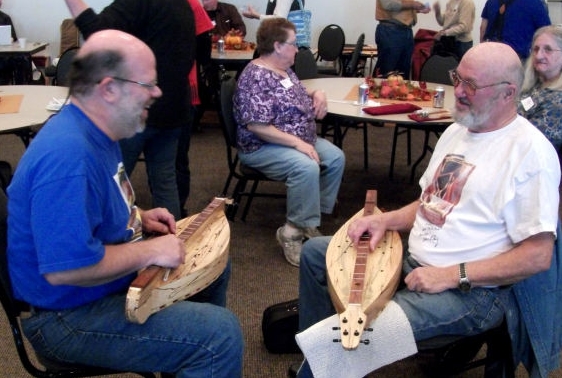 I ordered mine (many years ago) from Don Neuhauser, who quite simply, is an amazing dulcimer builder! Don is in Charlestown, Indiana. My dulci-bro is built with a…
I ordered mine (many years ago) from Don Neuhauser, who quite simply, is an amazing dulcimer builder! Don is in Charlestown, Indiana. My dulci-bro is built with a…
Why use the DAA tuning?
With mountain dulcimer, every tuning has benefits to recommend it. Every tuning also has limitations.
Someone wrote to me recently to ask why we include lessons on the DulcimerCrossing website in the DAA tuning. Here are the 4 reasons that I wrote back in response:
Categories
- News (10)
- Events (4)
- News (6)
- Events (4)
- subscriber news (236)
- mountain dulcimer (128)
- hammered dulcimer (131)
- uncategorized (6)
- lessons (190)
- mountain dulcimer (199)
- hammered dulcimer (155)
- history (22)
- music theory (40)
- octave (1)
- plagal cadence (1)
- dulci-bro (73)
- fingerpicking (3)
- fingerstyle mountain dulcimer (4)
- nina zanetti (4)
- aeolian (2)
- dorian (4)
- ionian (3)
- lydian (1)
- mixolydian (3)
- modes (2)
- traditional (2)
- tuning (4)
- music education (2)
- NSME (1)
- standards (1)
- drone (3)
- folk alliance (1)
- jonah brody (1)
- koto (1)
- chromatic mountain dulcimer (8)
- sam lee (1)
- scottish folk song (1)
- linda ratcliff (5)
- practice (29)
- chromatic mountain dulcimer (66)
- dulcimercrossing.com (2)
- erin rogers (7)
- building (8)
- black mountain (1)
- jerry read smith (1)
- Joshua Messick (1)
- song of the wood (1)
- don pedi (5)
- fiddle whamdiddle (9)
- miss mcleod (2)
- steve eulberg (30)
- vi wickam (9)
- buying (1)
- choosing (1)
- purchasing (1)
- orphan girl (1)
- copyright (1)
- amplification (2)
- contact pickup (1)
- eulberg (4)
- microphone (2)
- pickup (2)
- berkeley (1)
- colorado (2)
- festivals (4)
- kentucky (1)
- scholarship (1)
- western carolina (1)
- noter (2)
- clubfooted jib (1)
- dgd (2)
- dgd tuning (1)
- special event (31)
- david massengill (2)
- reverse ionian (1)
- chuck boody (1)
- concertina (1)
- deedee tibbits (1)
- dulcimer (7)
- evart (1)
- evart funfest (1)
- linda foley (1)
- michigan (1)
- original dulcimer players club (1)
- fingerstyle (11)
- gebhard woods (1)
- technique (1)
- harmonics (1)
- dan delancey (2)
- june apple (1)
- linda thomas (3)
- modal (1)
- expression (1)
- playing expressively (1)
- dulcimer pledge (1)
- christmas (2)
- nativity (1)
- DAC (2)
- minor more (1)
- mississippi sawyer (1)
- holiday (5)
- joy to the world (1)
- jingle bells (1)
- reverse ionion (1)
- hand independence (1)
- hand separation (1)
- lullabye of muffe (1)
- tina gugeler (1)
- absolute beginner mountain dulcimer (1)
- beginner (2)
- mountain (3)
- string-side up (1)
- absolute beginner hammered dulcimer (1)
- blog (2)
- dulcimercrossing. (1)
- topics (1)
- blues (4)
- resonator (4)
- dulcimer orchestra (2)
- kitty puss (1)
- mike clemmer (1)
- noter style (2)
- jam survival (7)
- butch ross (3)
- looping (1)
- intro (4)
- neal hellman (4)
- erin mae lewis (9)
- rehearsal (3)
- italian (1)
- lauda (1)
- irish (1)
- slipjig (1)
- rhythm (2)
- robert force (2)
- tuner (1)
- exercises (1)
- scales (1)
- devotions (3)
- hark advent (1)
- the glad sound! (1)
- chords (3)
- chromatic (4)
- erin (1)
- theory (7)
- advent (5)
- preparation (4)
- stir up (1)
- appalachia (4)
- hillbilly (1)
- mountains (1)
- traditional music (1)
- dampers (1)
- hearts of the dulcimer (3)
- patricia delich (2)
- wayne jiang (2)
- appalachian (1)
- John Jacob Niles (1)
- Live Events (28)
- Premium Level Membership (2)
- habits from the muse (1)
- progress (6)
- support (2)
- Anna Muckova (1)
- cimbalom (1)
- CWA (1)
- Czech Republic (1)
- Magdalena Muckova (1)
- nonsuch (1)
- Slovak Republic (1)
- podcast (1)
- aubrey atwater (2)
- jean ritchie (2)
- log-in (1)
- update (1)
- lucky (1)
- performance (9)
- preparing (1)
- study (1)
- dulcimers (1)
- wendy songe (2)
- bluegrass (2)
- growth (1)
- resolutions (2)
- risks (1)
- capo (1)
- snark (1)
- fiddle (61)
- criticism (2)
- judy klinkhammer (1)
- miles davis (2)
- wrong note (1)
- live and let live (1)
- style (1)
- barlow knife (1)
- old school old-time (2)
- marie kirby (1)
- bass mountain dulcimer (1)
- elaine conger (1)
- larry conger (1)
- practice smarter (8)
- musical journey (1)
- piano (1)
- calm (1)
- dog (1)
- su la li (1)
- bluebird cafe (1)
- inspiration (3)
- new input (2)
- trust (1)
- practice space (2)
- quite (1)
- how to practice (8)
- you are what you practice (1)
- workshop (5)
- rich chords (2)
- kaitlin pabo-eulberg (1)
- hooked on dulcimers (1)
- humor (1)
- blue water thinking (1)
- creativity (2)
- environment (2)
- original tunes (1)
- 1+ fret (1)
- chopin (1)
- classical (1)
- assessment (1)
- skill levels (1)
- waltz (1)
- caledonian club (1)
- ensemble (1)
- group (1)
- dulci-tune (1)
- tuning game (1)
- love (2)
- workout (1)
- learning (8)
- teacher (6)
- self-taught (1)
- how long (1)
- jam sessions (6)
- learn to play (1)
- strategies (2)
- fariña (1)
- mimi (1)
- pete seeger (2)
- rainbow quest (2)
- goals (1)
- planning (1)
- backing tracks (6)
- matthew dickerson (2)
- concert (1)
- erin mae (2)
- guitar (5)
- deborah hamouris (3)
- dj (2)
- freight and salvage (1)
- classic (1)
- licks (1)
- rock (1)
- berkeley dulcimer orchestra (1)
- premiere (1)
- banjo (1)
- frank proffitt (1)
- frank warner (1)
- tom dooley (1)
- baker (1)
- binding (1)
- blue lion (1)
- bob (1)
- gluing (1)
- janita (1)
- live (1)
- tips (1)
- spouse (1)
- amplified (1)
- DI box (1)
- digital interface (1)
- sound reinforcement (1)
- 2nd Set Concert (2)
- contest (1)
- flash mountain dulcimer brigade (2)
- JimJim & the FatBoys (1)
- Pecan Grove (1)
- walnut valley festival (2)
- winfield (1)
- wvfest (1)
- thinking (1)
- case (1)
- cross-legged (1)
- grip (1)
- safe dulcimer (1)
- sit (1)
- slip (1)
- stand (1)
- stool (1)
- strap (1)
- learn (3)
- mistakes (1)
- successes (2)
- herbie hancock (1)
- improvising (1)
- jazz (2)
- lois hornbostel (2)
- wrong chord (1)
- atlantic (1)
- barbara allen (1)
- frank profitt (1)
- scots-irish (1)
- chord wizard (1)
- diatonic (2)
- equi-distant (3)
- tom strothers (1)
- tool (2)
- busker (1)
- tsimbaly (1)
- ukraine (1)
- ukrainian (1)
- calendar (1)
- schedule (1)
- baritone (1)
- concert window (3)
- katie moritz (1)
- faq (1)
- frequently asked questions (1)
- logged in (1)
- navigation (1)
- old time (1)
- patreon (1)
- shape-note (1)
- special (1)
- carrell (1)
- geoff reeve-black (1)
- malvern (1)
- presnell (1)
- articulations (1)
- chicken reel (1)
- conger (1)
- soldier's joy (1)
- basic level membership (1)
- caring for your instrument (1)
- winter weather (1)
- god rest ye (1)
- rhythmic displacement (1)
- builder (1)
- tam kearney (1)
- toronto (1)
- don neuhauser (1)
- slide (1)
- ashley ernst (1)
- dan and angie landrum (1)
- dpn (1)
- dulcimer players news (1)
- dulcimersessions.com (1)
- maddie macneil (1)
- arkansas traveler (1)
- Mark Alan Wade (2)
- 3d playing (1)
- playing across the strings (2)
- chord symbols (1)
- understanding chords (3)
- dulcimer club (1)
- class (1)
- habits (1)
- skills (1)
- jimmy driftwood (1)
- failures (1)
- hours (1)
- youtube (1)
- arranging (1)
- bill robinson (1)
- cold winter night (1)
- karen mueller (3)
- jig (1)
- DAd tuning (1)
- hyfrydol (1)
- hymn (1)
- 2020 (1)
- premium (1)
- gounod (1)
- hitchcock (1)
- dan evans (1)
- spotted pony (2)
- steveeulberg (1)
- nylon-string (1)
- stephens lutherie (1)
- musical devotions (1)
- award (1)
- fernando sor (1)
- hammered (1)
- understanding (1)
- lent (1)
- leap forward (1)
- power of music (2)
- sharing (1)
- persistence (5)
- Practice (4)
- routine (1)
- tour (1)
- new website (1)
- arrranging (1)
- celtic (1)
- single jig (1)
- mountain dulcimer (3)
- busking (1)
- audio (1)
- playback (1)
- protection (1)
- adaptations (1)
- dulcimer acquisition syndrome (1)
- dulcimer acquisition disease (1)
- contests (1)
- lessons (1)
- identify (1)
- apps (1)
- motivation (1)
- hands (1)
- In Memoriam (1)
- guitar (1)
- archive (1)
- concerts (1)
- mountain dulcimer (2)
- hammered dulcimer (1)
- lessons (1)
- workshops (1)
- self-assessment (1)
- learn (1)
- greek (1)
- mindset (3)
- accountability (2)
- encouragement (1)
- prodding (1)
